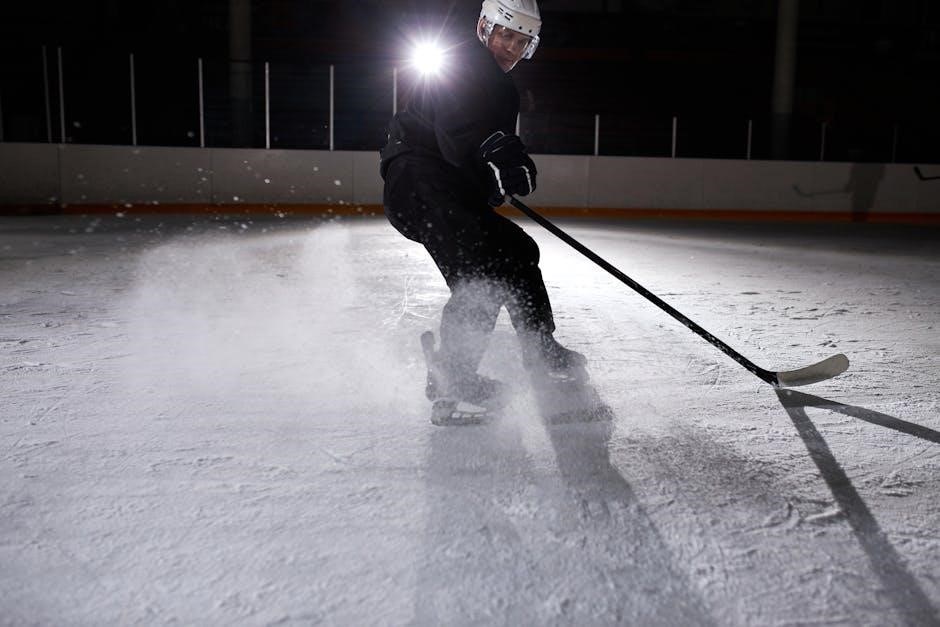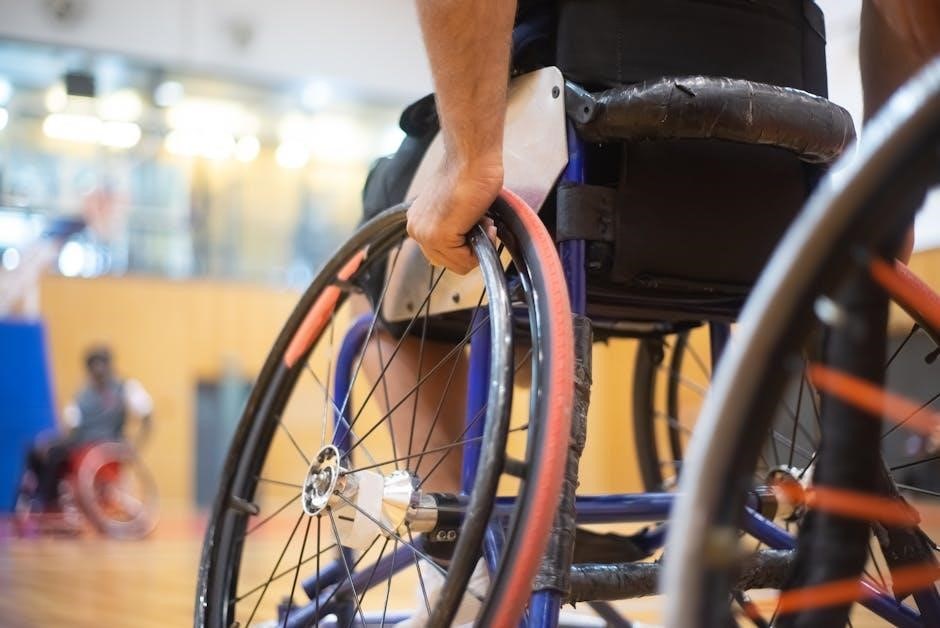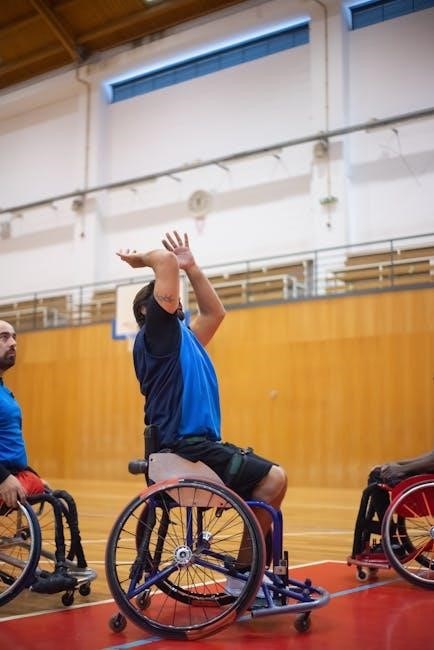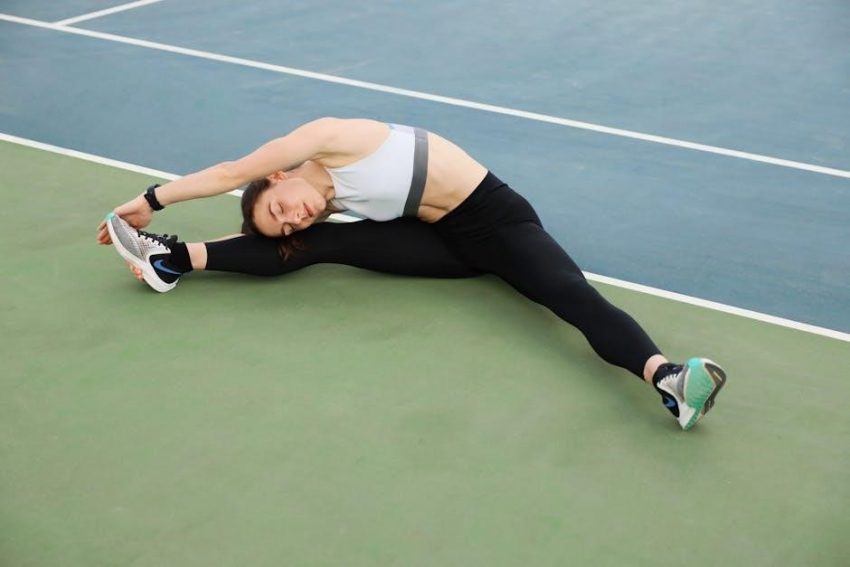Overview of STNR Reflex Integration
STNR reflex integration involves specific exercises to enhance motor skills and development․ It improves coordination, balance, and focus, benefiting children with ADHD, Autism, and sensory challenges․ Resources and PDF guides are widely available online, offering structured programs and creative activities to support integration effectively․
1․1 What is the Symmetrical Tonic Neck Reflex (STNR)?
The Symmetrical Tonic Neck Reflex (STNR) is a primitive reflex that influences the coordination of neck and limb movements․ It emerges in utero and plays a crucial role in early motor development․ The STNR reflex is characterized by a symmetrical response where the arms and legs extend or flex in unison with neck movements․ Proper integration of this reflex is essential for higher-level motor skills, posture, and binocular vision development․ When retained, it can lead to challenges such as poor coordination, difficulty with handwriting, and focus issues․ Understanding the STNR is key to addressing developmental delays and improving overall motor function in children and adults alike․

Importance of Reflex Integration
Reflex integration is crucial for developing coordination, balance, and focus․ It enhances motor skills and supports sensory processing, addressing challenges in ADHD, Autism, and developmental delays effectively․

2․1 Role of STNR in Motor Skill Development
The STNR reflex plays a vital role in motor skill development by enabling coordinated arm and leg movements․ It helps children transition from crawling to walking and supports posture control․ When integrated, it enhances hand-eye coordination, fine motor skills, and overall physical abilities․ Retained STNR reflexes can lead to challenges like poor posture or difficulty with writing․ Integrating this reflex through specific exercises promotes better sensory integration and motor planning, which are essential for academic and physical success, especially in children with developmental delays or conditions like ADHD and Autism․ STNR integration also supports the development of binocular vision, further aiding in tasks requiring focus and precision․

STNR Reflex Integration Exercises
STNR integration involves exercises like Cat/Cow, crawling, bear walks, and wheelbarrow walks․ These activities enhance motor skills, coordination, and sensory integration, benefiting children with developmental challenges․
3․1 Cat/Cow Exercises
Cat/Cow exercises are a fundamental part of STNR reflex integration, promoting neck and spine mobility․ The child starts on hands and knees, arching the back like a cat and then rounding it like a cow․ This movement enhances coordination, posture, and sensory awareness․ Regular practice helps integrate the STNR reflex, improving balance and fine motor skills․ These exercises are simple, engaging, and can be adapted to suit different ages and abilities․ They are often recommended in PDF guides as an effective way to support developmental progress in children with sensory or motor challenges․
3․2 Crawling on Tummy
Crawling on the tummy is a vital exercise for STNR reflex integration, promoting motor skill development and sensory integration․ It involves the child moving their arms and legs in a crawling motion while lying on their stomach․ This activity strengthens neck and shoulder muscles, enhances coordination, and supports the integration of the STNR reflex․ Regular practice helps improve posture, balance, and overall motor control․ Crawling on the tummy is particularly beneficial for children with developmental delays or sensory processing challenges․ It is widely recommended in reflex integration programs and can be found in detailed exercise guides and PDF resources available online․ Consistency and proper form are key to maximizing its benefits for motor and sensory development․
3․3 Bear Walks
Bear Walks are a fun and effective exercise for STNR reflex integration, involving the child walking on all fours like a bear․ This activity strengthens the upper body, improves coordination, and enhances sensory integration․ By engaging the arms and legs in a rhythmic motion, Bear Walks promote the development of motor skills and balance․ They are particularly beneficial for integrating the STNR reflex, as they encourage the brain to process sensory information more effectively․ Regular practice of Bear Walks can help children improve their posture, reduce fidgeting, and enhance overall physical stability․ This exercise is suitable for children of various developmental levels and is often included in reflex integration programs․ Its simplicity and engaging nature make it a popular choice for both therapists and parents․
3․4 Wheelbarrow Walks
Wheelbarrow Walks are a dynamic exercise for STNR reflex integration, where the child walks on their hands while an adult holds their legs․ This activity strengthens the arms, shoulders, and core, enhancing upper body stability and coordination․ It also promotes sensory integration by engaging the vestibular and proprioceptive systems․ To perform the exercise, the child starts in a plank-like position, with the adult gently lifting and holding their legs․ The child then moves forward on their hands, mimicking the motion of a wheelbarrow․ Regular practice of Wheelbarrow Walks can improve posture, reduce sensory-seeking behaviors, and enhance overall motor control․ This exercise is particularly effective for addressing retained STNR reflexes and is often recommended in reflex integration programs for children with developmental challenges․

Assessing STNR Reflex Retention
STNR reflex retention is assessed through observation of posture, movement patterns, and coordination challenges․ Specific tests can trigger the reflex, helping professionals identify integration needs and guide exercises․
4․1 How to Check for Retained STNR Reflex
To determine if the STNR reflex is retained, observe the child’s posture and movement patterns․ A retained STNR may cause difficulty in maintaining proper posture or coordinating arm and leg movements․ Professionals often use specific tests to trigger the reflex, such as crawling exercises or neck movements․ If the reflex is present, it may result in involuntary arm or leg extensions․ Early identification is crucial for implementing appropriate integration exercises․ Detailed assessments by occupational therapists can provide insights into the extent of retention and its impact on motor skills․ Identifying a retained STNR allows for tailored interventions to improve coordination and developmental outcomes․ Regular observation and professional evaluation are key steps in this process․

Benefits of STNR Integration
STNR integration enhances motor skills, coordination, and focus․ It improves posture, binocular vision, and sensory integration, benefiting children with ADHD, Autism, and developmental challenges․ Regular exercises promote better emotional regulation and academic performance, fostering overall developmental growth and confidence in daily activities․
5․1 Benefits for Children with ADHD
STNR integration exercises offer significant benefits for children with ADHD by improving focus, reducing impulsivity, and enhancing motor skills․ These exercises help regulate sensory processing, which can reduce restlessness and improve emotional regulation․ Regular practice of STNR integration activities, such as cat/cow exercises and bear walks, can lead to better concentration and reduced inattentiveness․ Studies suggest that integrating primitive reflexes, including the STNR, can diminish ADHD symptoms like hyperactivity and impulsivity․ By addressing retained reflexes, children with ADHD often experience improved coordination, posture, and overall academic performance․ Parents and therapists report positive outcomes, making STNR integration a valuable tool in managing ADHD-related challenges․
5․2 Benefits for Children with Autism
STNR reflex integration exercises provide numerous benefits for children with Autism, particularly in improving sensory processing and motor skills․ These activities help reduce sensory-seeking behaviors and repetitive movements often associated with Autism․ By integrating the STNR reflex, children experience enhanced body awareness and coordination, which can lead to better posture and balance․ Improved focus and attention are also common outcomes, as the exercises help regulate sensory input․ Additionally, STNR integration can reduce anxiety and stress by promoting a sense of calm and control․ Many parents and therapists report positive changes in social interactions and emotional regulation following consistent practice of STNR exercises․ Overall, STNR integration is a valuable tool in supporting the development and well-being of children with Autism․
5․3 Benefits for Sensory Integration
STNR reflex integration exercises significantly enhance sensory integration by improving how the body processes sensory information․ These exercises help regulate sensory input, reducing over- or under-responsiveness to stimuli․ By strengthening the connection between the brain and body, STNR integration fosters better coordination and balance․ It also supports the development of binocular vision and hand-eye coordination, essential for academic and daily activities․ Additionally, integrating the STNR reflex can reduce sensory-seeking behaviors and anxiety, promoting a calmer and more regulated nervous system․ This makes it easier for individuals to engage in their environment without feeling overwhelmed․ Overall, STNR reflex integration is a powerful tool for enhancing sensory processing and overall developmental progress․

Designing a Reflex Integration Program
A well-structured program includes exercises like Cat/Cow, crawling, and bear walks, tailored to individual needs․ It ensures progressive challenges and adapts to developmental milestones, fostering optimal integration․
6․1 Components of an Effective Program
An effective STNR reflex integration program includes tailored exercises like Cat/Cow, crawling, and bear walks, ensuring individualized plans for each child’s needs․ Progression and adaptability are key, with activities gradually increasing in complexity․ Consistency and frequency, such as daily practice, are crucial for optimal results․ Incorporating positive reinforcement and engaging techniques helps maintain motivation․ Monitoring progress and adjusting exercises accordingly ensures the program remains challenging yet achievable․ These components work together to foster motor skill development, sensory integration, and overall neurological maturation, providing a comprehensive approach to STNR integration․
6․2 Upgrading and Downgrading Exercises
Upgrading and downgrading exercises in an STNR integration program allows for customization based on a child’s progress and ability․ Upgrading involves increasing the difficulty of exercises, such as adding resistance, duration, or complexity, to challenge the child further․ For example, advancing from crawling on a flat surface to crawling uphill or incorporating obstacles․ Downgrading involves simplifying exercises to ensure the child can perform them successfully, such as reducing the time spent on an activity or providing additional support․ Regularly assessing the child’s response and adjusting the exercises accordingly ensures the program remains effective and engaging․ This adaptability is crucial for maintaining progression and preventing plateaus in STNR integration․

Case Studies and Success Stories
STNR integration has shown remarkable results in various case studies, with children experiencing improved coordination, focus, and sensory processing․ Success stories highlight enhanced developmental milestones and reduced symptoms in ADHD and Autism, demonstrating the positive impact of targeted exercises․
7․1 Example of Successful STNR Integration
A case study involving a child with ADHD and sensory processing challenges demonstrated significant improvement following STNR integration exercises․ The child initially struggled with focus, coordination, and balance․ After consistently practicing Cat/Cow exercises, Crawling on Tummy, and Bear Walks, noticeable progress was observed․ Improved posture, enhanced fine motor skills, and better academic performance were reported․ The child also exhibited reduced sensory sensitivities and increased confidence in physical activities․ This success story highlights how structured STNR integration programs can positively impact developmental milestones and overall well-being in children with neurological challenges․ The exercises, detailed in various PDF guides, provided a clear and effective roadmap for achieving these results․

Troubleshooting Common Challenges
Common challenges include lack of progress, exercises being too challenging, or retained reflexes․ Troubleshooting involves adjusting exercise intensity, ensuring proper form, and seeking professional guidance when needed․
8․1 Overcoming Common Issues in STNR Integration
Common challenges during STNR integration include improper exercise form, lack of progress, or retained reflexes․ To address these, ensure exercises like Cat/Cow or crawling are performed correctly․ If progress stalls, consider adjusting the intensity or incorporating play-based activities to keep children engaged․ Retained reflexes may require additional time or professional guidance․ Consistency is key, as integration is a gradual process․ Parents and therapists should also monitor for signs of frustration and adapt exercises to suit individual needs․ By addressing these issues proactively, the integration process can be made more effective and enjoyable for children․

Resources for STNR Integration
Downloadable PDFs and online guides provide detailed STNR exercises, including Cat/Cow and crawling․ Websites like Emerge Pediatric Therapy offer free resources, while eBooks and therapy portals share tailored programs for children with ADHD and Autism․ Use specific keywords like “STNR exercises PDF” to find comprehensive materials easily․
9․1 Finding STNR Reflex Integration Exercise PDFs
STNR reflex integration exercise PDFs are widely available online, offering structured programs and creative activities․ Websites like Emerge Pediatric Therapy provide free downloadable guides, while platforms like Therapy Fun Zone and Your Therapy Source share detailed exercise plans․ These resources often include visual aids, step-by-step instructions, and progress tracking tools․ Additionally, eBooks and therapy blogs feature tailored programs for children with ADHD, Autism, and sensory challenges․ Use search keywords like “STNR exercises PDF” or “primitive reflex integration resources” to find comprehensive materials․ Many PDFs are designed for parents and therapists, ensuring accessibility and ease of implementation at home or in clinical settings․
